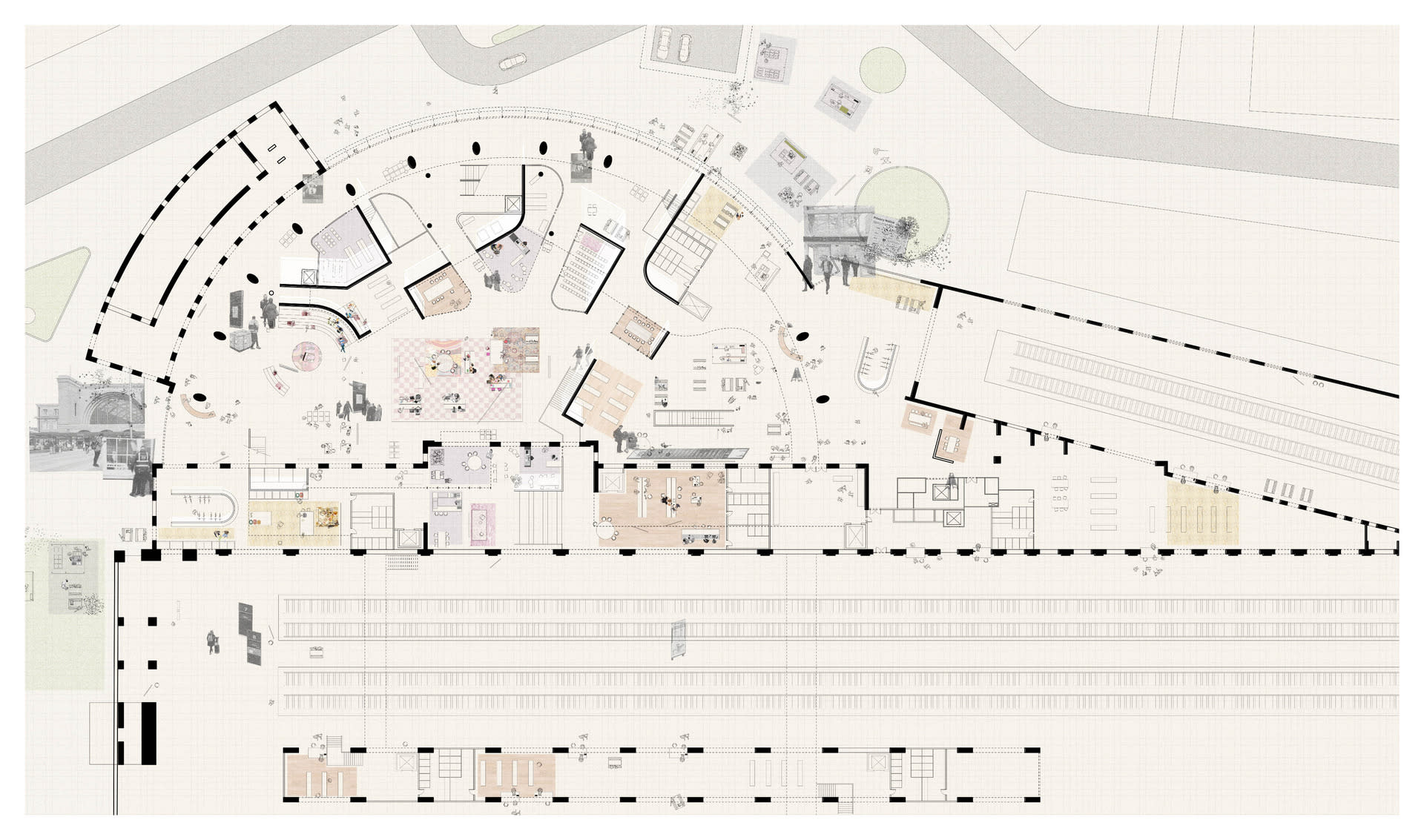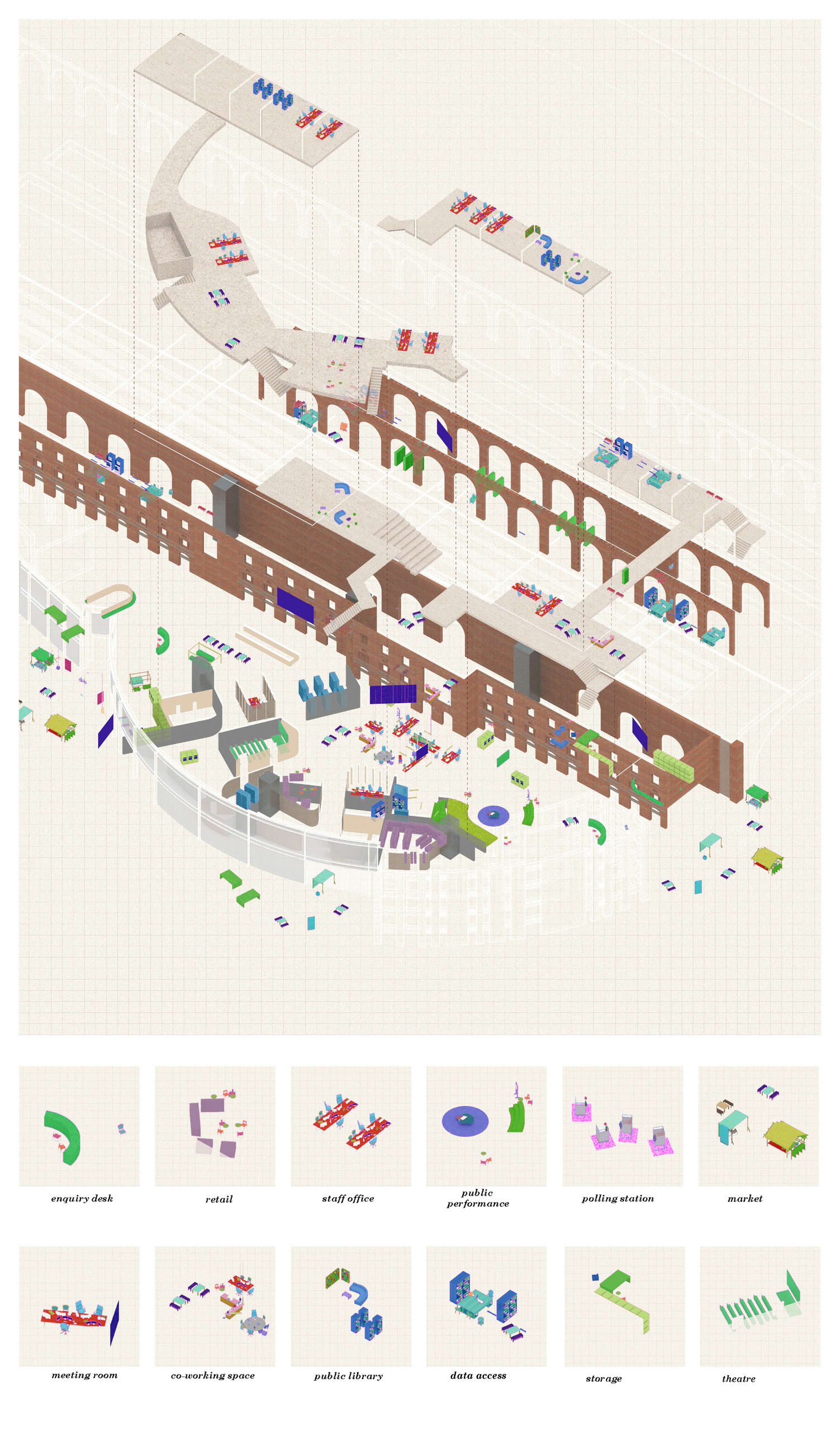The Asymmetrical Gaze and Docile Architecture
from a surveillance architecture to a civic architecture in King’s Cross station
1. how can architecture add opacity in the context of pervasive surveillance?
2. how can architecture facilitate spontaneous civic acts?
Architecture often plays an active role in coercion; it engages in the spatialisation of the gaze, inviting, operating, and incorporating new systems of discipline and control. It can serve as an archive of evolving surveillance and a government tool to manipulate society’s anxieties.
The project starts by questioning the definition of the public interest in General Data Protection Regulation and ‘Citizen’s Arrest’ under UK law.
The definition of ‘public interest’ in the General Data Protection Regulation function in the context of the need for authorities to control the public, rather than in the exercise of the public interest. While the GDPR is one of the fundamental grounds of the physical and digital surveillance system, the public is not involved in the ‘public interest’.
The jurisdiction of a security guard is confined to the property they have been employed to protect. They have the same authority and rights as any other citizen. But now, ‘Citizen’s Arrest’ arguably provides the fundamental grounds through which security guards assume their legitimacy to enforce it.
Consequently, the existence of surveillance cameras and the absent authorities can be called into question; do they act in the interest of the public to prevent crime and protect individuals, or are they exploited for the purposes of coercion?
This project tries to bring the public and authority together, aiming to regain the trust from both sides through a newly established civic architecture in King’s Cross Station.












